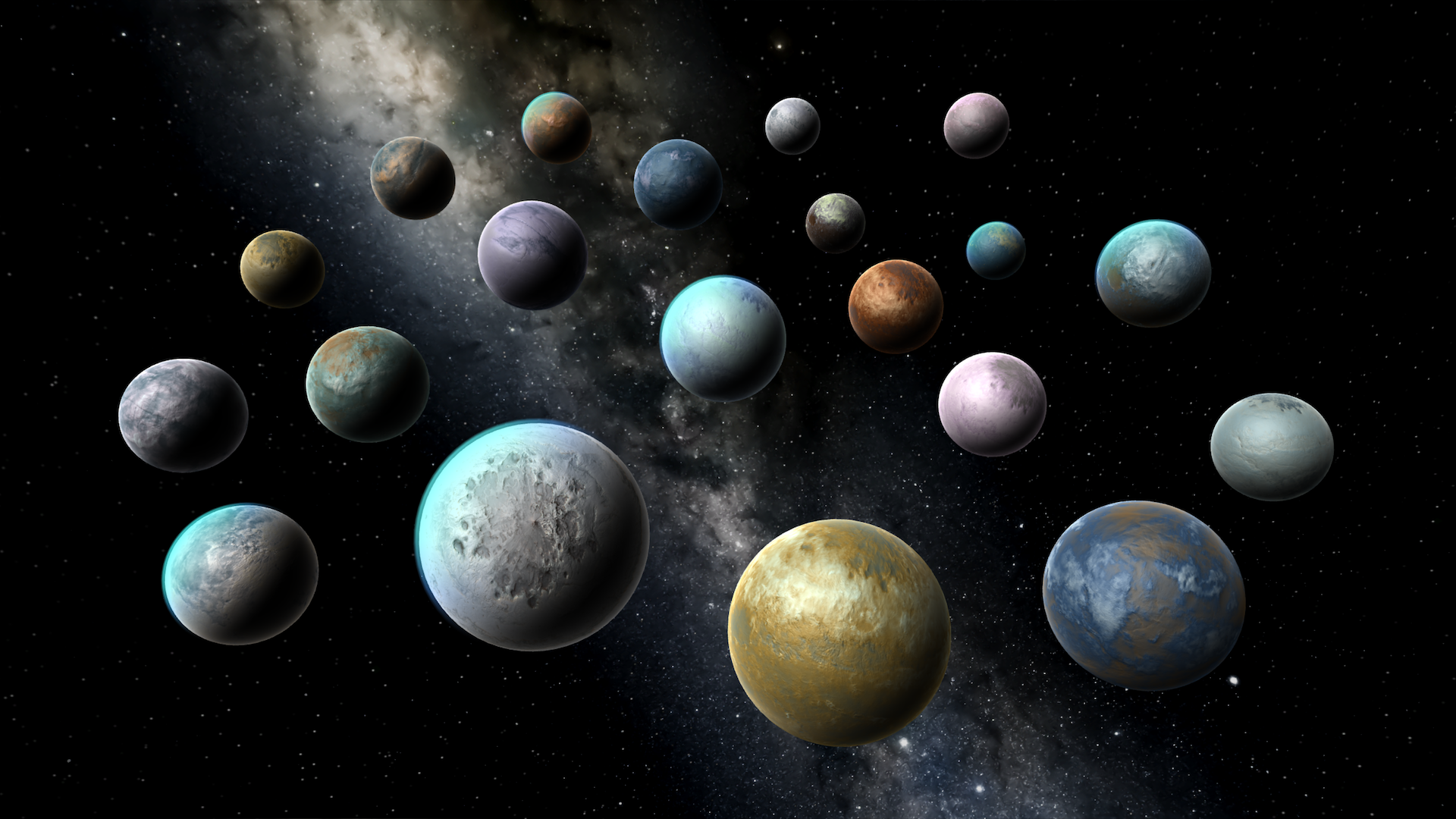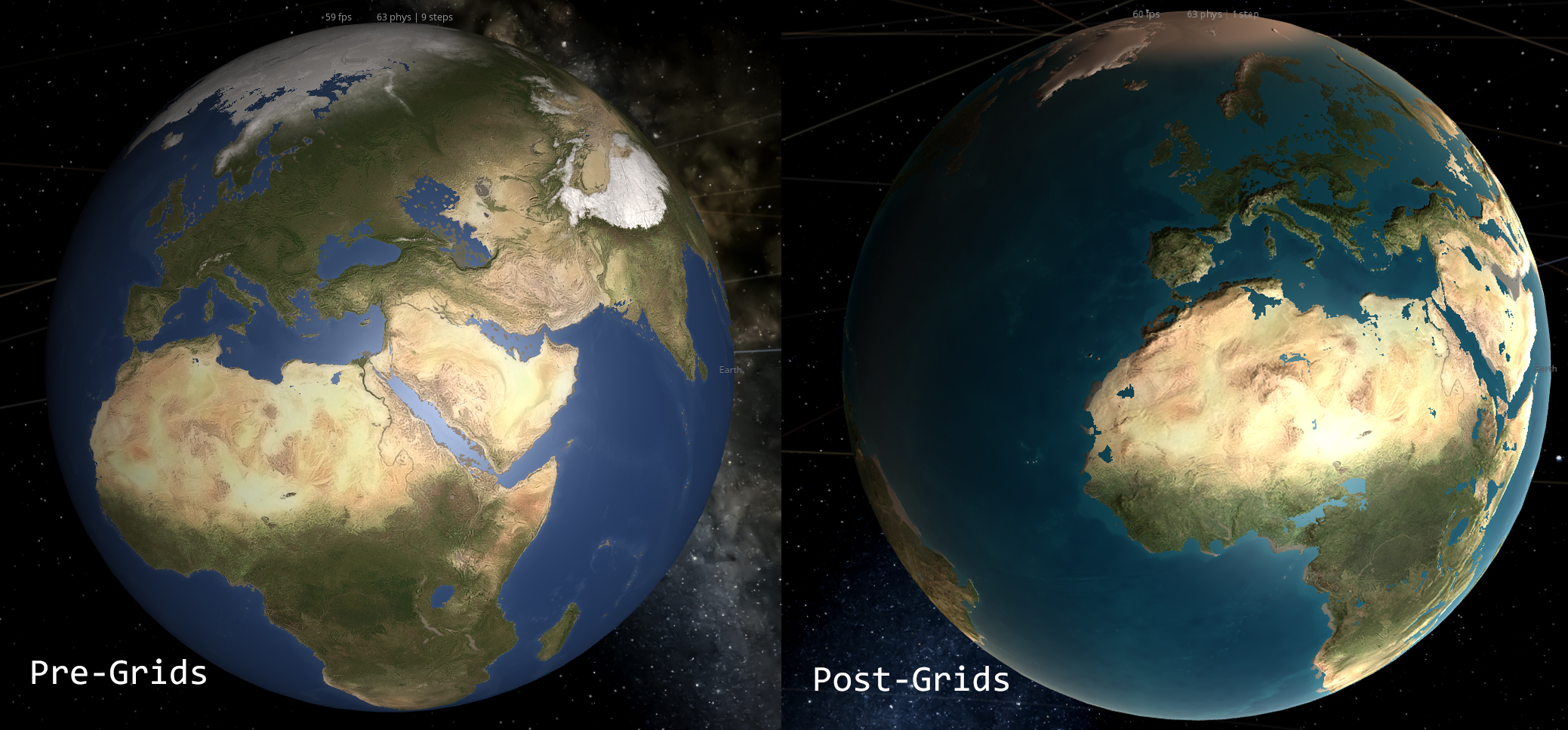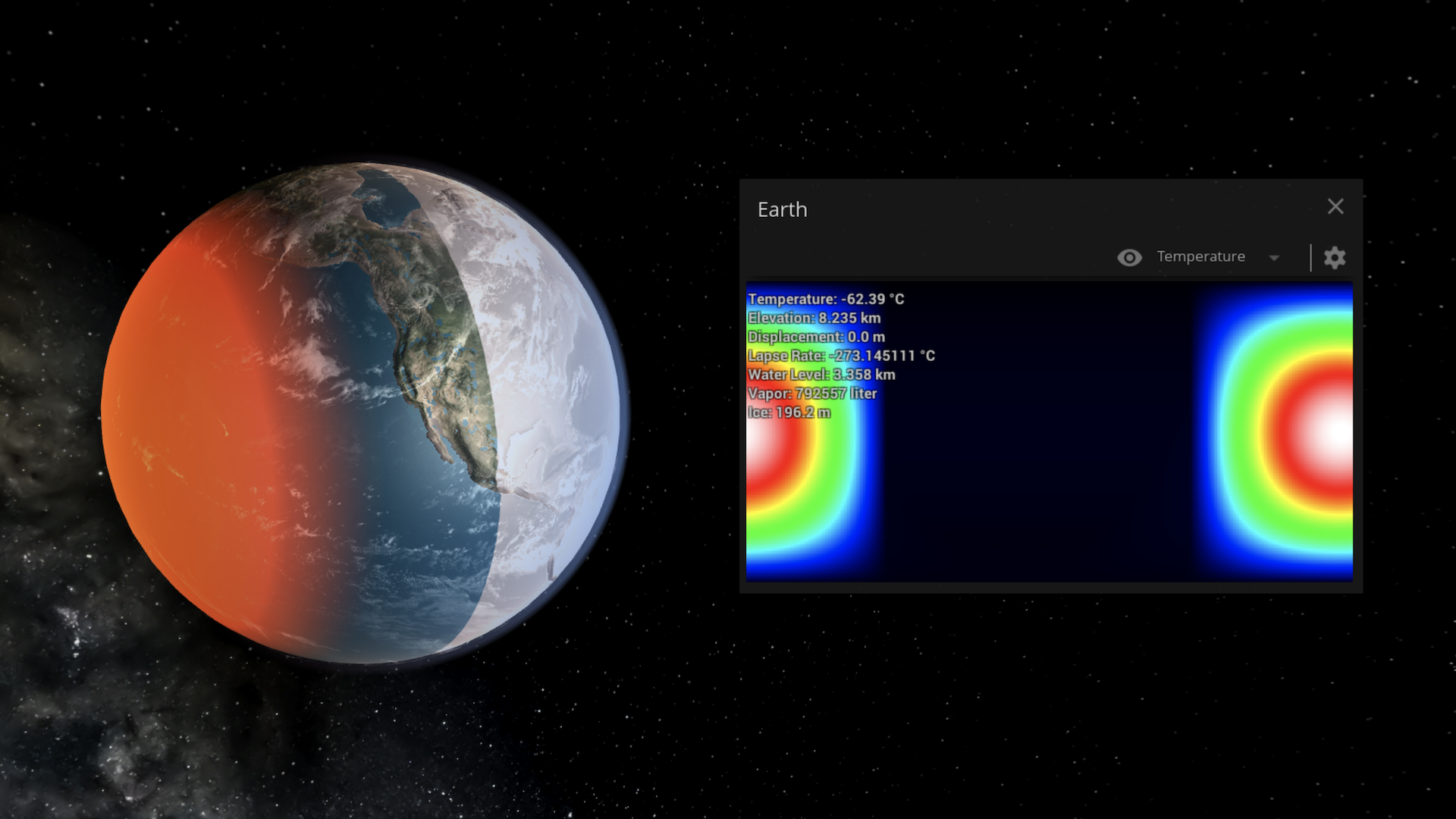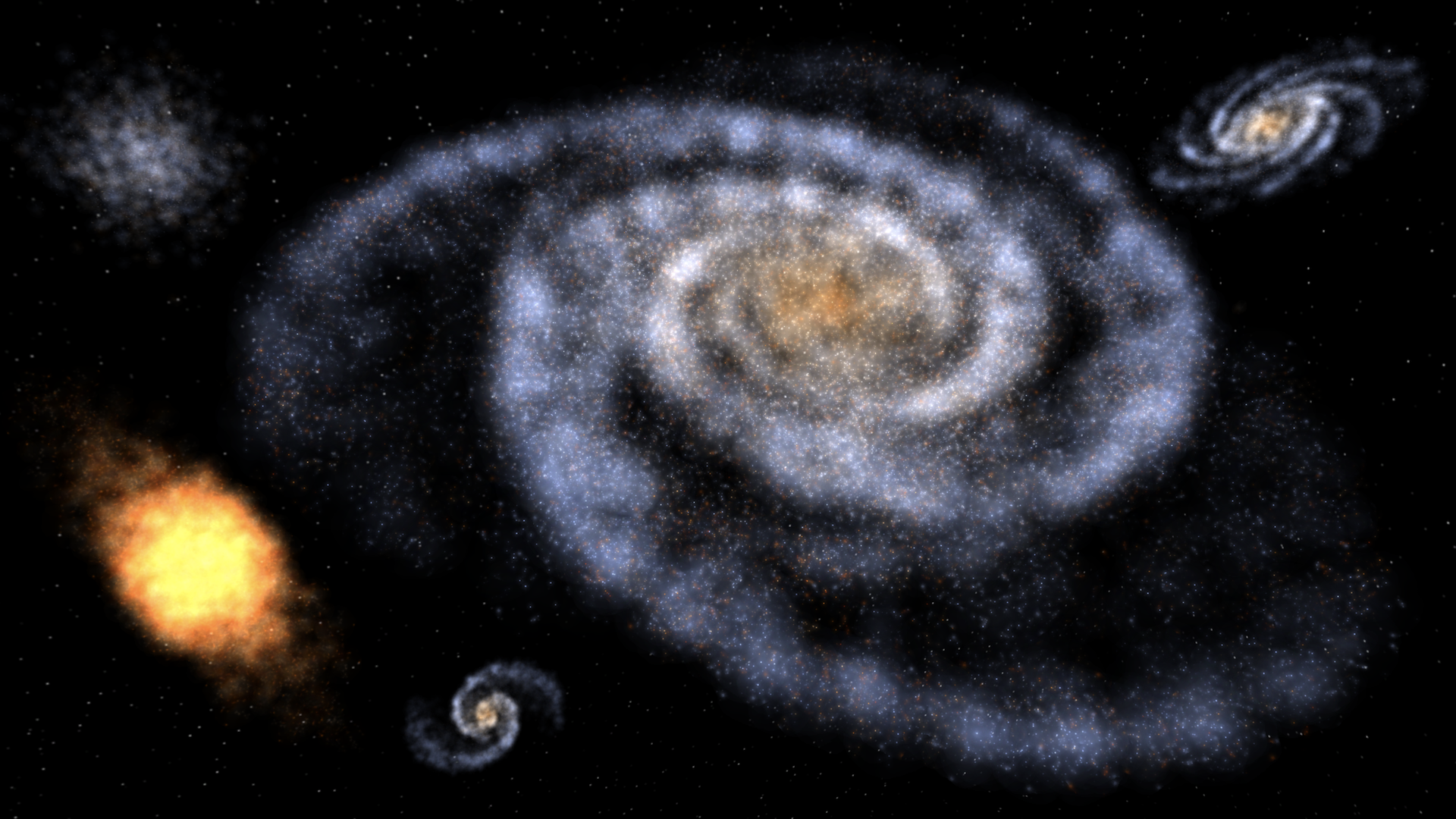Surface Grids & Lasers | DevLog #8

GIF: Filling in the Moon’s craters with ice.
Here’s our round eight DevLog on the development status of Surface Grids and Lasers. Thanks for everyone’s patience with this blog post. We took a little break from Surface Grids to talk about our work on Magic Leap in our last post -- check it out to see planets bouncing off of walls and our new, floating user interface. And if you haven’t seen them yet, check out the previous Surface Grids DevLogs #1, #2, #3, #4, #5, #6, and #7.
A primer on Surface Grids for anyone not familiar:
It’s a feature we’re developing for Universe Sandbox that makes it possible to simulate values locally across the surface of an object. In effect, it allows for more detailed and accurate surface simulation and more dynamic and interactive surface visuals. It also makes it possible to add tools like the laser, which is essentially just a fun way of heating up localized areas of a surface.
Keep in mind this is a development log for a work-in-progress feature. Anything discussed or shown may not be representative of the final release state of Surface Grids. Read: Surface Grids & Lasers are not yet available in Universe Sandbox! To make this more clear, we’re now calling these posts DevLogs instead of Dev Updates.
Random Improvements

Everyone likes Earth and the rest of the cool, popular planets that make up our Solar System, but sometimes you want something a little different. That’s why we have the randomly generated planets. And with Surface Grids, the randomly generated planets are getting a little makeover.
We now have new textures and new elevation maps (which you can now see in the data map) that spruce these up and make them more unique. And we have further plans to improve how these are generated to widen the range of possibilities and customization.
Water Your Planet

It’s been possible for a while now to add water to planets in Universe Sandbox. But it’s never looked so good as it does with Surface Grids.
The key components to this improvement are great examples of what make Surface Grids an awesome and powerful new feature. It’s all about the localized data: First, you can see that the water spreads locally. Before Surface Grids, water would just fill in across the whole surface, regardless of where it hit. Second, you can see the direct correlation between elevation and water level. This was sort of possible pre-Surface Grids, but now there’s a data map for both of these that makes it even easier to see this in action (see screenshot below). And third, you can see the water freeze and the ice melt locally as well. That’s the nice localized temperature part of it.

Watch Your Step
Detouring from how awesome Surface Grids is, let’s look at one of its fundamental challenges. As with most simulation features in Universe Sandbox, Surface Grids has to battle against the simulation time step (the rate at which the simulation runs, for example 10 days per real-time second). We know that it would be awesome if you could just set the time step to whatever rate you wanted and it would just work, but that’s unfortunately not possible, at least not without sacrificing accuracy.
This fact is most obvious with gravity simulation in Universe Sandbox. The simulation automatically sets a limit to how fast the time step can go while still maintaining relatively accurate orbits. And if you try to set it faster than this limit, you’ll see a message that it’s not safe to do so. For Surface Grids, we’ll need to add a similar warning system, as it too has a limit for accurate results.
A good example of time step limits for Surface Grids is in the simulation of water flow. This is simulated by moving X volume of water from one cell to its neighboring cell each step. The maximum volume of water that can be moved in each step is the maximum volume contained in that cell -- it can’t transfer water that it doesn’t have. So if you’re running at a time step that is already moving the maximum amount of water and you try to increase the time step further, the data starts to get a little weird.
We have some ideas for improving this, but ultimately there’s no way around time step limits. Our hope is that we can make a smooth experience by communicating where these limits are while allowing you to exceed them at the risk of accuracy loss.
What’s Next
We’re feeling really good about our progress on the Surface Grids feature. Now that we have the visuals and systems working for random planets, it’s time to turn to planetoids and gas giants. We also want to work on visualization for vapor, but that’s one of the few remaining items that still need a connection between data and graphics.
There are some more apparent issues to work through yet, too, like getting water levels to initialize properly on Earth. Then there are the new elements of the user interface (UI) that we’ve designed but have yet to add, and some questions about UI interaction that come up as we continue to play around with Surface Grids. And of course there are the inevitable giant bugs running around that have to be squashed.
All of this will definitely keep us busy, but the pile of tasks gets smaller every day as we get closer to releasing an experimental build and getting out the official update. We still can’t say when either of these will come yet -- we thank you for your patience.
We’re also still working on a smaller update that will introduce some improvements and bug fixes for the new galaxies added in Update 23, plus a new introductory experience. Hopefully we’ll have this ready soon!




 June 28: Update 23.0.1 is a small patch to fix an issue with tidal heating.
June 28: Update 23.0.1 is a small patch to fix an issue with tidal heating.

